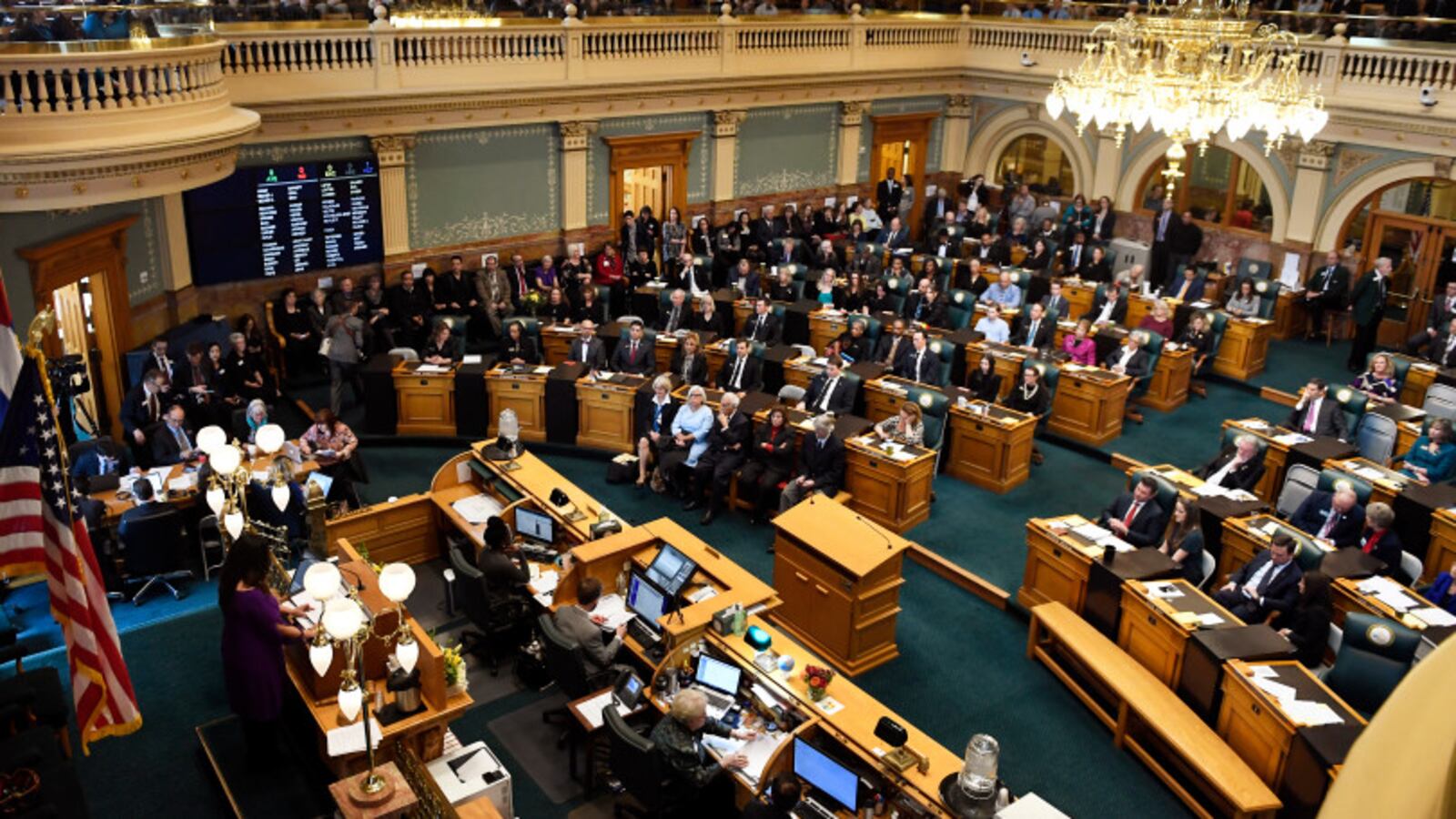Fewer students showed up in Colorado this year than predicted, and they were a little better off economically too. That slight discrepancy between the forecast and the actual student count has created some wiggle room in the state’s $6.6 billion education budget. That wiggle room, in turn, has led to a partisan fight over the fate of a few million dollars, less than one-tenth of 1 percent of what the state spends on K-12 education.
Democrats want to hold total education spending steady and send an additional $12.9 million to school districts, an average of $8 more per student. Republicans want to keep average per-pupil spending steady at $7,662 and put $7 million in savings into the general fund.
That’s the substance of the dispute, but it’s also a symbolic fight that could herald a bigger budget battle to come.
“Going into the session, the precursor was how much we would fight over transportation versus education,” said state Rep. Millie Hamner, a Dillon Democrat and chair of the Joint Budget Committee. “And that’s what this would appear to be about.”
Colorado has more money available for the state budget this year, thanks in part to a historic compromise at the end of the last session that freed up room under the revenue cap imposed by the Taxpayer’s Bill of Rights. Republicans want to use that new fiscal freedom to dedicate $300 million a year toward a transportation bond program. The governor’s office has proposed an amount less than half that.
Democrats, meanwhile, want to use that extra money for a range of needs, including putting more money toward K-12 education. Since the Great Recession, the state has not funded schools at the levels dictated by the state constitution, instead applying a “negative factor” or “budget stabilization factor” to reduce the total amount. But every dollar that goes toward paying down the negative factor is a dollar that isn’t available for roads.
“This year you would think it would be easier because we have more money, but that is not what is happening,” Hamner said. “There is so much pent-up need.”
A bill that makes mid-year adjustments to school funding is now going into its fifth round of debate because the two sides can’t agree. The Republican position prevailed on the Joint Budget Committee back in January, but when the bill got to the floor of the state House, Democrats amended it to add money back in. But in the Senate Appropriations Committee, most of that money got stripped back out, returning the bill to the form it had when it left the Joint Budget Committee. Then the Republican-controlled state Senate spent nearly two hours over two days in fierce debate over the bill as Democrats argued in vain to keep the $7 million in schools.
This week, House Democrats, joined by a few Republicans, declined to accept the Senate amendments. The bill is going to conference committee to see if some compromise can be worked out.
“Our K-12 system is significantly underfunded,” state Rep. Brittany Pettersen, a Lakewood Democrat and chair of the House Education Committee, argued on the floor of the House. “We have the opportunity with the reduction in the pupil count to ensure that our school districts can benefit from the increased funding, and they’re not cut in the middle of the year.”
On the Senate floor, state Sen. Kevin Priola, a Republican from Brighton, called the $7 million a “rounding error” in the billions the state spends on K-12 education – yet it’s a rounding error that Republicans very much want to see land in the general fund.
“The JBC made that decision because there are a lot of needs around our state, and we are holding the line,” said state Sen. Kevin Lundberg, a Berthoud Republican and member of the Joint Budget Committee. “That money goes into the general fund, and that money is available for all the other needs of our state.”
It’s not clear what will happen at conference committee. Both sides have staked out hard positions.
Meanwhile, the lack of a resolution on the mid-year funding adjustment for this year leaves some uncertainty about the 2018-19 K-12 education budget – which the Joint Budget Committee is supposed to debate next week. State law says that the negative factor can’t be any larger than it was the previous year, and budget analysts use that number as a starting point when they draft the education budget.
But right now, no one knows how big the budget stabilization factor is for the 2017-18 budget year because the legislature hasn’t agreed on the mid-year adjustment. The Democratic proposal would leave a budget stabilization factor of $815 million, while the Republican proposal would land at $822 million.

